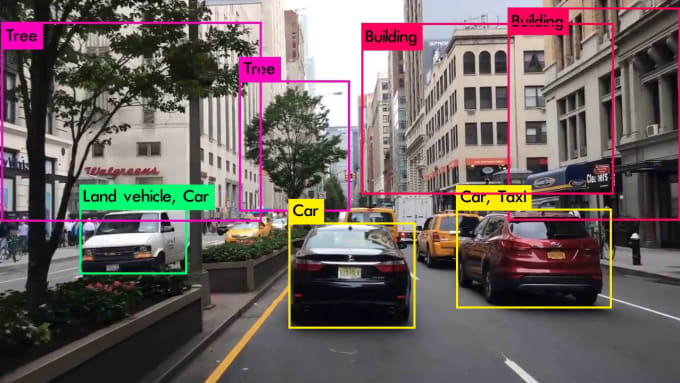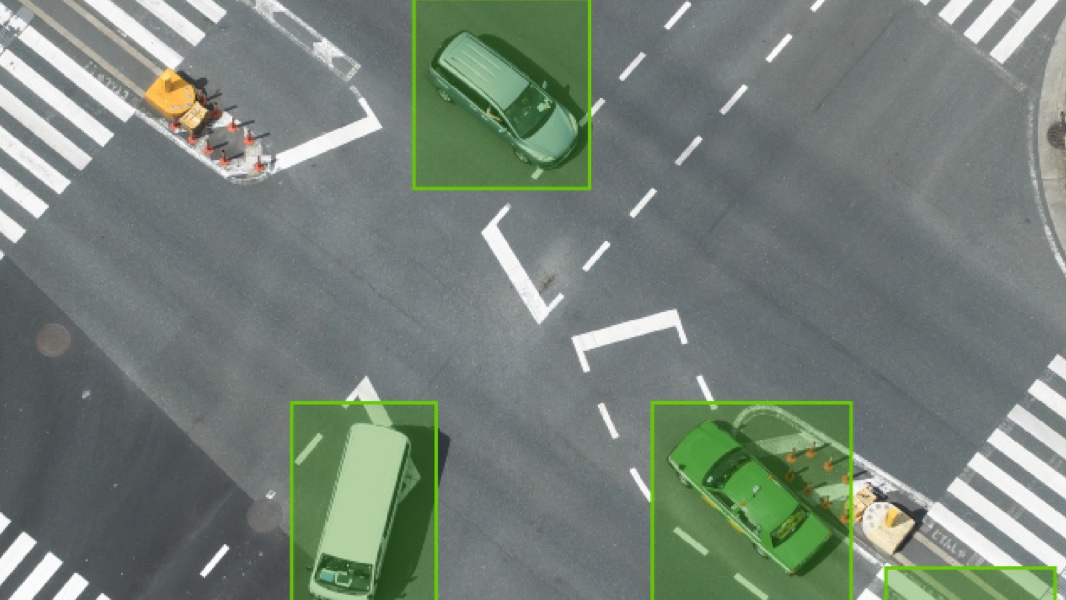In today’s digital age, image recognition technology has emerged as a groundbreaking innovation that is transforming various industries. From healthcare to retail, this cutting-edge technology is revolutionizing the way we interact with images and visual data. In this article, we will delve into the world of image recognition technology, exploring its functionalities, applications, benefits, and prospects.
What is Image Recognition Technology?

At its core, image recognition technology encompasses the ability of machines to process and interpret visual data, enabling them to recognize and categorize objects, scenes, and patterns. This technology combines computer vision techniques, machine learning algorithms, and neural networks to extract meaningful information from images, allowing computers to “see” and interpret the world around us.
How Does Image Recognition Technology Work?
AI Image recognition employs a series of intricate processes to analyze and understand images. The workflow typically involves the following steps:
- Image Acquisition: The system acquires images through various sources, such as cameras or image databases.
- Preprocessing: The captured images undergo preprocessing to enhance quality, remove noise, and normalize colors.
- Feature Extraction: Key features of the images are extracted, enabling the system to identify unique characteristics for classification.
- Classification: The extracted features are compared with existing patterns and models to classify the image into specific categories or objects.
- Post-processing: Additional steps, such as image segmentation or object localization, may be performed to refine the results further.
Applications of Image Recognition Technology
Image recognition technology has found a wide range of applications across industries. Here are some notable examples:
- Healthcare: Image recognition enables medical professionals to diagnose diseases, identify anomalies in medical images (such as X-rays or MRI scans), and track the progress of treatments.
- Retail: E-commerce platforms utilize image recognition to enhance the shopping experience by offering visual search capabilities. Customers can simply upload an image of a desired product, and the system will find similar items available for purchase.
- Automotive: Self-driving cars rely on image detection technology to identify and interpret road signs, traffic lights, and pedestrians, ensuring safe navigation.
- Security: Image recognition AI plays a crucial role in surveillance systems, enabling real-time monitoring, facial recognition, and identification of suspicious activities.
- Manufacturing: Image recognition is used in quality control processes, inspecting products for defects and ensuring adherence to specific standards.
Impact of AI Image Recognition on Industries
The integration of image recognition technology into various industries has had a profound impact. It has improved operational efficiency, enhanced customer experiences, and unlocked new growth opportunities. By automating tasks that were once labor-intensive, businesses can streamline processes, reduce costs, and deliver faster results. Furthermore, the ability to analyze visual data at scale has enabled companies to gain valuable insights, leading to data-driven decision-making and improved overall performance.
Advantages and Benefits of Computer Vision Image Recognition

The widespread adoption of image recognition technology brings several advantages and benefits:
- Increased Efficiency: Automating visual analysis tasks accelerates processes, saving time and resources.
- Enhanced Accuracy: Image recognition algorithms can achieve high levels of accuracy in identifying objects and patterns.
- Improved Customer Experience: Visual search and recommendation systems enhance the user experience by providing personalized suggestions based on image queries.
- Data-driven Insights: Analyzing visual data allows businesses to uncover patterns, trends, and customer preferences, leading to informed decision-making.
- Enhanced Safety and Security: Image detection technology aids in identifying potential threats and ensuring the safety of individuals and assets.
Case Studies with Record-Breaking Achievements and Insights from Influencers
As we dive deeper into the applications and advancements of image recognition technology, let’s take a look at some groundbreaking case studies and share inspiring insights from industry leaders.
Case Study 1: Healthcare – Revolutionizing Diagnostics
One of the most impactful applications of image recognition has been in the healthcare industry. A record-breaking achievement in this field occurred when a leading AI healthcare company developed an image recognition system capable of diagnosing certain types of cancer from medical imaging with an accuracy rate higher than that of experienced radiologists. The system was trained using thousands of medical images, enabling it to identify tumors in X-rays and MRI scans with over 90% accuracy—far exceeding the average accuracy of human doctors.
This breakthrough has been instrumental in early cancer detection, providing patients with earlier treatment opportunities and significantly improving outcomes. As Dr. Rachel Green, a prominent medical researcher, states:
“AI is not replacing doctors; it’s empowering them to make faster, more accurate decisions, ultimately saving lives.”
Case Study 2: Retail – E-commerce Reimagined with Visual Search
In the world of retail, e-commerce giant Shopify launched an AI-powered visual search feature, enabling customers to search for products by simply uploading images. The feature not only increased engagement but also saw an astounding 35% rise in conversion rates for participating brands within just three months of implementation. This success is a testament to the growing potential of visual search in reshaping consumer behavior.
Influencers in the tech industry have hailed this development, with famous tech commentator Ben Lichtenstein tweeting: “The future of retail is here. Visual search is not just a cool feature – it’s a game changer for customer experiences and sales.”
Case Study 3: Automotive – Autonomous Vehicles Lead the Way
Self-driving cars are often seen as the most high-profile application of image recognition technology. Tesla, for example, has integrated an advanced image recognition system into its vehicles, enabling them to recognize road signs, pedestrians, other vehicles, and potential hazards in real time. In 2024, Tesla announced that its vehicles equipped with this technology had achieved over 200 million miles of autonomous driving, marking a record in the industry and proving the feasibility of autonomous driving powered by image recognition.
Elon Musk, CEO of Tesla, shared his thoughts on this achievement:
“This isn’t just about self-driving cars. It’s about a safer, smarter, and more sustainable future for transportation.”
Case Study 4: Security – Revolutionizing Surveillance
Security systems across the globe have experienced a seismic shift thanks to AI-driven image recognition technology. In London, a large-scale surveillance network powered by AI-based image recognition has dramatically reduced crime in certain areas. The system utilizes facial recognition and behavioral analysis to identify suspicious activity in real-time, alerting law enforcement to potential threats. The initiative has been credited with a 40% reduction in crimes such as theft and vandalism in monitored zones.
AI security pioneer Professor Michael Johns commented:
“When you combine real-time data analysis with image recognition, you not only enhance security but also bring communities closer to their safety goals.”
Case Study 5: Manufacturing – Quality Control Automation
Manufacturers have embraced image recognition for quality control, and the results speak for themselves. In an unprecedented move, a major electronics manufacturer implemented an AI-driven image recognition system that identified minute defects in smartphone screens during the production process. This technology reduced the need for manual inspections by 75%, while improving product quality and production speed. In just one year, the company reported a 20% increase in profit margins due to improved operational efficiency.
Industry expert Sarah Blanton, who has worked extensively with AI-driven manufacturing technologies, shared this on LinkedIn:
“The future of manufacturing is smarter, faster, and more precise. AI-powered inspection is the key to pushing productivity to new heights.”
Challenges and Limitations
Despite its advancements, AI image recognition still faces several challenges and limitations:
- Data Limitations: The performance of image recognition models heavily relies on the availability of high-quality and diverse training data.
- Variability in Images: Factors such as lighting conditions, angles, and occlusions can affect the accuracy of image recognition algorithms.
- Contextual Understanding: While image recognition excels at object identification, understanding the contextual meaning behind images remains a complex task.
- Ethical Considerations: The use of image recognition technology raises ethical concerns, particularly regarding privacy, bias, and potential misuse.
Future Trends
As technology continues to evolve, the future of image detection holds tremendous potential. Here are some key areas to watch:
- Advancements in Deep Learning: Ongoing research in deep learning and neural networks will enhance the accuracy and capabilities of image recognition models.
- Integration with Augmented Reality (AR): Image recognition technology combined with AR will create immersive experiences, overlaying virtual content onto the real world.
- Edge Computing: Moving image recognition processing to edge devices, such as smartphones or IoT devices, will enable real-time analysis and reduced latency.
- Cross-Domain Applications: Brand image recognition technology will extend beyond specific industries, finding applications in areas like agriculture, tourism, and entertainment.
Conclusion
In conclusion, AI image recognition has emerged as a powerful tool that enables machines to comprehend and interpret visual content. Its wide range of applications, coupled with the numerous advantages it offers, has revolutionized industries and transformed the way we interact with images. As technology continues to advance, we can expect even more exciting possibilities and innovations on the horizon.
Unlock the potential of image recognition technology for your business. Request a demo from AIM Technologies today and discover how our cutting-edge solutions can empower your organization with visual intelligence. Don’t miss out on the opportunity to stay ahead in the digital landscape.
FAQs
How accurate is image recognition technology?
- AI image recognition has achieved remarkable accuracy levels, often surpassing human performance in specific tasks. However, the accuracy can vary depending on factors such as the complexity of the images and the quality of training data.
Is image recognition technology used in facial recognition systems?
- Yes, image recognition forms the foundation of facial recognition systems. It enables the identification and verification of individuals based on their facial features, revolutionizing security and authentication processes.
Can image recognition technology be used for object detection?
- Absolutely! Object detection is one of the primary applications of image recognition. It allows the system to identify and locate specific objects within images or videos, enabling tasks such as autonomous driving or inventory management.
Are there any privacy concerns associated with image recognition technology?
- Yes, the widespread use of image recognition raises privacy concerns. It is crucial to address issues related to data security, consent, and potential biases to ensure responsible and ethical implementation.
How can businesses leverage image recognition technology?
- Businesses can leverage image recognition in various ways, such as enhancing product search and recommendation systems, automating quality control processes, and improving customer experiences through visual interaction.




